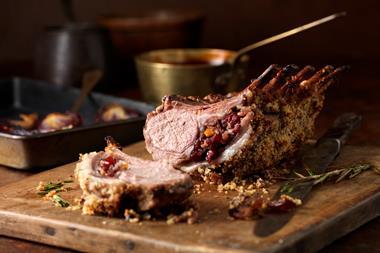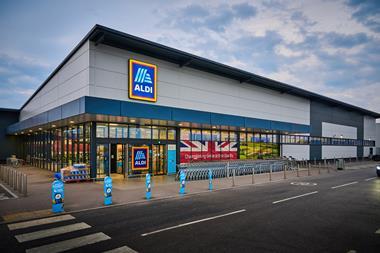Opportunities lie in pricing and restaurant-style lines, experts say
Facing an energy crisis and looming inflation, frozen food has a battle on its hands. But if it can rise to the occasion, the opportunity for success could be huge.
That was the message from suppliers and retailers at this week’s British Frozen Food Federation conference.
Speakers outlined a hopeful vision for the sector, which could play a growing role as shoppers feel the crunch. At the same time, they acknowledged the massive disruption facing frozen businesses.
So what are frozen food’s biggest worries? And where can it gain an advantage?
Inflation was, understandably, front of mind at the conference. And chiefly the impact on energy prices.
Energy inflation was “tailing off from the gas side – although oil is predicted to increase from the back end of 2023”, Bidcorp CEO Andrew Selley told the crowd. For an energy-intensive sector like frozen, these movements will be crucial.
While the government has this week unveiled a six-month support package for energy costs, BFFF CEO Rupert Ashby called for longer-term thinking.
“What we would love to see from government is a long-term energy strategy… one that allows development to incorporate new technologies, makes connecting to the grid easier and more affordable, and drives innovation,” he told The Grocer.
Energy isn’t the only issue, though. “We’ve got the weakest pound in 40 years and temperatures reducing yields from agriculture and shortening planting and harvesting seasons,” Selley explained. “We’ve seen specific impacts from the Ukraine crisis – tariffs placed on Russia seriously impacted us on white fish and wheat, and farmers changing their land use to rapeseed from potato because of the increased margins on oil.”
“Other commodities like potatoes are only just starting their inflationary journey”, added Selley. Already, “many manufacturers are actually reducing the SKUs they have available”.
Aside from these challenges – which affect the wider industry too – speakers argued frozen had a key role to play in the cost of living crisis.
Selley stressed the category still offered incredible value and more stable pricing than other areas of grocery – being more able to build buffer stocks.
Indeed, while price rises were initially implemented faster in frozen, other categories “are overtaking and going to become more expensive”, argued IRI senior strategic insight director Daniel Wright.
Restaurant alternatives
Wright outlined a further opportunity, if frozen can create quickservice restaurant-style experiences at home. This could see “more movement of spend from OOH” as shoppers trade down from nights out.
However, these opportunities require joined-up thinking. That’s according to Tesco prepared foods category director Tom Lye, who called for better collaboration between retailers and suppliers.
The two needed to “find ways of operating together that give teams space and permission” to spend less time worrying about year-on-year comparisons and move “into a space where they can think more about how to drive some really significant incremental growth,” Lye said.
“The thing that makes that really hard to do at the moment is that every five weeks we’re talking about another cost problem. But there will be a moment where that’s not the case.”
As Bidcorp’s Selley warned of at least 12 months of further challenges in the frozen supply chain, that moment may be a way off yet.




















No comments yet